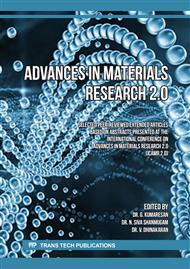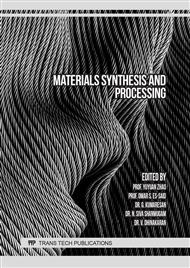p.103
p.115
p.125
p.133
p.141
p.149
p.175
p.183
p.191
Mechanical Properties of Steel Fiber Reinforced Geopolymer Concrete Incorporated with Fly-Ash and GGBS
Abstract:
As it expands, it is becoming easier to obtain fresh insights into the numerous modifications and advancements that are taking place in the concrete business. Aside from that, as infrastructure continues to expand, the need for specialised concrete continues to increase in the present market. In addition, cement, aggregates, and other additions are the major elements in the production of concrete, with the exception of water. The goal strength for this current experimental attempt was 40 N/mm2, which was achieved. In this experimental effort, steel fibres with a standard length of 25mm, a diameter of 0.5mm, and an aspect ratio of 50 are used to completely replace cement in a concrete mix. It is the crimpled sort of steel fibre that has been utilised in this experiment, and it has been used in equal numbers with flash and GGBS in this study. Steel fibres are added to the binder, which is GGBS, and low calcium-based flash is provided by a local thermal plant, up to a maximum of 2 percent by weight, in order to compensate for the stress created by strain. This kind of construction achieves a balanced concrete mix that can bear stress while still staying robust in compression. It was determined that the insertion of steel fibres resulted in the biggest gain in strength, with a 1.5 percent increase in strength. A considerable increase in compressive, flexural, and split tensile strength, among other attributes, was seen with the addition of steel fibres to the mix. The usage of fly ash and ground-granulated blast-furnace slag (GGBS) aids in the mitigation of air pollution by removing carbon dioxide and carbon monoxide from the environment, which are created during the cement-making process.
Info:
Periodical:
Pages:
183-190
Citation:
Online since:
November 2022
Authors:
Keywords:
Price:
Сopyright:
© 2022 Trans Tech Publications Ltd. All Rights Reserved
Share:
Citation:



